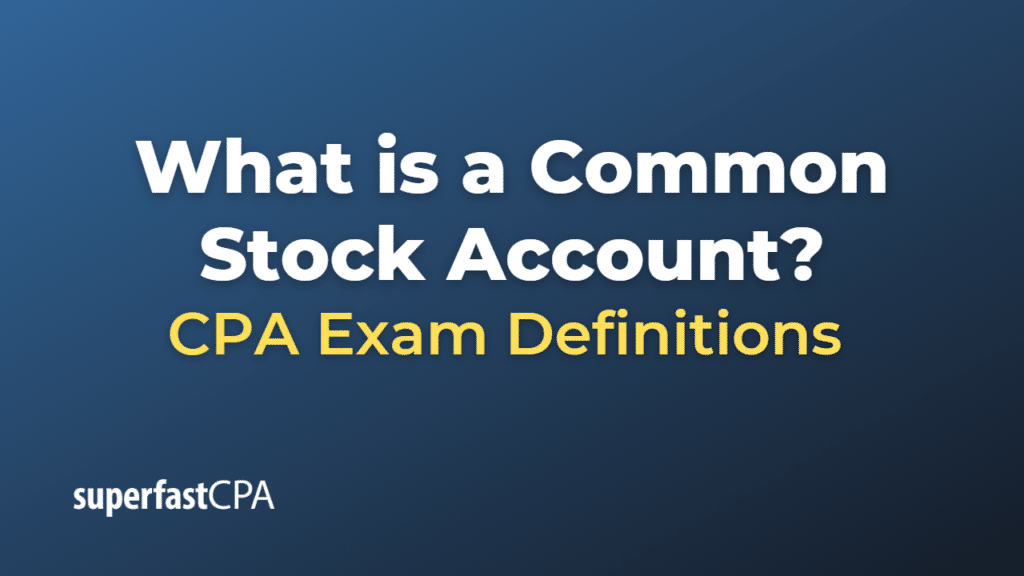Common Stock Account
A common stock account is an account on a company’s balance sheet that represents the total value of the outstanding common stock issued by the company. This account falls under the equity section of the balance sheet, reflecting the ownership interests of the company’s shareholders. It is calculated by multiplying the number of issued common stock shares by the par value per share.
Par value, also known as nominal or face value, is a nominal value assigned to each share of common stock when it is issued. In most cases, the par value of common stock is set at a minimal amount, such as $0.01 or $1.00, as it has little economic significance in today’s market. It serves more as an accounting convention rather than representing the actual market value of the shares.
For example, if a company has issued 1 million shares of common stock with a par value of $0.01 per share, the common stock account on the balance sheet would show $10,000 (1,000,000 shares x $0.01 per share).
It is important to note that the common stock account does not represent the market value of the company’s outstanding shares. The market value, or market capitalization, is determined by the stock’s current market price multiplied by the number of outstanding shares. The common stock account, in contrast, is an accounting measure based on the par value of the shares issued.
In addition to the common stock account, other accounts related to equity on the balance sheet include preferred stock, additional paid-in capital, retained earnings, and treasury stock. These accounts provide a comprehensive view of the company’s equity structure and the capital contributed by shareholders over time.
Example of a Common Stock Account
Let’s consider a hypothetical example to illustrate the concept of a common stock account on a company’s balance sheet.
Imagine Company XYZ, a publicly traded corporation, has issued 5 million shares of common stock with a par value of $0.01 per share. The company’s balance sheet would include a common stock account under the equity section, which can be calculated as follows:
Common Stock Account = Number of Issued Shares × Par Value per Share
Common Stock Account = 5,000,000 shares × $0.01
Common Stock Account = $50,000
The common stock account would be recorded as $50,000 on the balance sheet, representing the total par value of the outstanding common stock.
Now, let’s assume that the current market price of Company XYZ’s common stock is $20 per share. The market capitalization (market value) of the company would be:
Market Capitalization = Number of Issued Shares × Market Price per Share
Market Capitalization = 5,000,000 shares × $20
Market Capitalization = $100,000,000
As you can see, the common stock account ($50,000) does not represent the market value of the outstanding shares ($100,000,000) but rather the total par value of the common stock issued. The market capitalization is determined by the stock’s current market price and the number of outstanding shares.
In addition to the common stock account, Company XYZ’s balance sheet may also include other equity accounts, such as additional paid-in capital, retained earnings, and treasury stock, providing a comprehensive view of the company’s equity structure and shareholders’ ownership interests.













